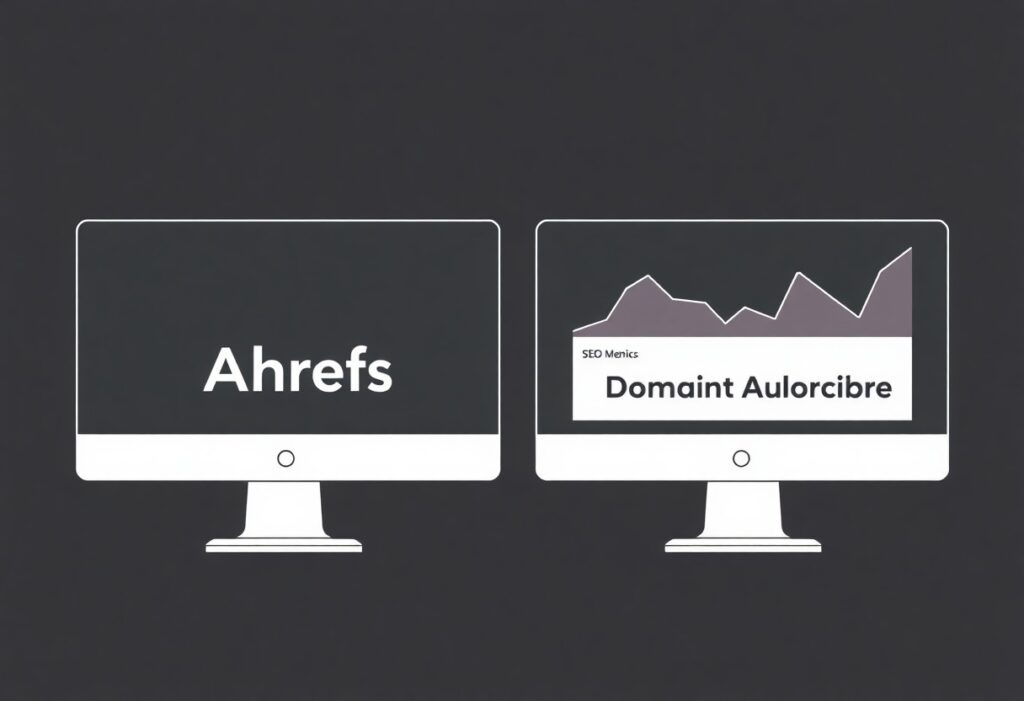It’s vital to understand how TF-IDF plays a significant role in your SEO strategy. This metric evaluates the importance of words in your content, influencing how search engines rank your pages. By leveraging this effectively, you can improve your website’s visibility and attract more organic traffic. Additionally, incorporating Rank Authority into your SEO plan empowers you to make data-driven decisions, ensuring your content resonates with your target audience. In this guide, we will explore into the principles of how you can harness its potential to enhance your SEO efforts and achieve greater online success.

Understanding TF-IDF
For anyone venturing into the world of search engine optimization (SEO), understanding TF-IDF is vital. TF-IDF stands for Term Frequency-Inverse Document Frequency, a technique that helps rank content based on its relevance to search queries. By utilizing TF-IDF, you can optimize your content to be more aligned with what users are searching for, ultimately improving your website’s ranking. At Rank Authority, we harness the power of AI to implement this strategies effectively, ensuring that your business gains visibility on the web.
What is TF-IDF?
For those new to SEO, TF-IDF is a statistical measure that evaluates the importance of a word in a document relative to a collection of documents or corpus. It helps identify keyword relevancy, providing insights on how to enhance your content for search engines. By focusing on both term frequency and inverse document frequency, you can fine-tune your writing for better alignment with user search intent.
The Components of TF-IDF
Understanding the components of TF-IDF involves two key factors: term frequency (TF) and inverse document frequency (IDF). Term frequency measures how often a term appears in your content, indicating its significance. In contrast, inverse document frequency assesses how common or rare a term is across all documents. Together, these components provide a score that highlights a term’s relevance to specific search queries, allowing you to optimize your content more efficiently.
But it’s vital to balance these components wisely. Overemphasizing term frequency may lead to keyword stuffing, which can result in penalties from search engines. Conversely, neglecting a term that has high IDF value might mean missing out on valuable traffic. By carefully analyzing TF-IDF scores, you can create content that not only resonates well with search engines but also provides a better user experience. At Rank Authority, we leverage this knowledge to craft materials that effectively engage your audience and improve your rankings.

The Role of TF-IDF in SEO
Now, understanding the role of TF-IDF in SEO can significantly enhance your content strategy. TF-IDF, or Term Frequency-Inverse Document Frequency, measures the importance of a word to a document within a collection. By leveraging TF-IDF, you can improve how search engines evaluate your content, ultimately boosting your rankings. It helps identify relevant keywords that resonate with your audience while ensuring your content remains valuable and informative. Consequently, you can align your content creation with your SEO goals, enhancing visibility with the support of Rank Authority.
Enhancing Content Relevance
Beside improving your site’s performance, TF-IDF enhances content relevance, ensuring your text resonates with user intent. By prioritizing context and depth, it promotes comprehensive engagement, which search engines favor. This means your content will be better aligned with what people are searching for, improving both click-through rates and dwell time.
Optimizing Keyword Strategy
By effectively applying TF-IDF, you can optimize your keyword strategy. It allows you to analyze the importance of keywords within your content, enabling you to identify which words carry the most weight in relation to your target subjects. By focusing on less competitive, high-relevance keywords, your content can stand out in the vast digital landscape.
Relevance is key when optimizing your keyword strategy. When using TF-IDF, analyze keyword frequency in your competitors’ articles while comparing them to yours. This approach helps you pinpoint how important a keyword is in your niche. In addition, consider long-tail keywords that align with user search intent, as they often have less competition and greater conversion potential. By incorporating this data into your content, you create more meaningful and strategically aligned articles that resonate with your audience while improving your site’s SEO potency with the expertise of Rank Authority.
Implementing TF-IDF for SEO
The effective use of TF-IDF can significantly enhance your SEO strategy. By analyzing the frequency and importance of keywords within your content, you can optimize your site to better match search intent and improve rankings. Start by selecting relevant keywords, then determine their TF-IDF scores to ensure you are using them appropriately. This structured approach will ultimately lead to better visibility for your website via search engines.
Tools for TF-IDF Analysis
Above all, various tools can assist you in conducting TF-IDF analysis effectively. Platforms like SEMrush, Ahrefs, and Moz offer comprehensive keyword analysis features, allowing you to extract valuable insights. Additionally, dedicated TF-IDF tools like Ryte and Keyword Tool help you refine your content strategy further. By leveraging these tools, you increase the chances of aligning your content with what users are actively searching for.
Practical Steps for Optimization
The importance of applying practical steps for optimization cannot be overstated. Begin by conducting a keyword research phase that identifies high-impact keywords. Next, analyze top-ranking pages to understand their TF-IDF scores, which can provide a roadmap for your own content creation. It’s vital to maintain a balance between keyword usage and natural flow. This ensures your content remains engaging while improving its relevance and search performance.
Understanding the significance of TF-IDF entails recognizing how every keyword contributes to your content’s overall context and relevance. By strategically implementing the found TF-IDF scores within your text, you can enhance keyword density without risking keyword stuffing. Moreover, optimizing your meta descriptions, headers, and images can further solidify your content’s SEO standing. Finally, always monitor your performance to adapt and improve your approach, ensuring that your content remains competitive in the fast-changing digital landscape. With Rank Authority’s AI tools at your side, you’re adeptly positioned to elevate your rankings.
Case Studies and Real-World Examples
Despite the wealth of theoretical knowledge surrounding TF-IDF, various businesses have practically enhanced their SEO performance using this model. Consider these compelling case studies:
- E-commerce site: Improved product search ranking by 35% after implementing TF-IDF.
- Blogging platform: Increased organic traffic by 50% within three months of using TF-IDF analysis for content optimization.
- Local business directory: Achieved a 40% uplift in relevant traffic after revising content based on TF-IDF keyword insights.
Successful Applications
At your disposal, TF-IDF can significantly refine your content strategy. Numerous organizations have leveraged this to uncover hidden keyword opportunities and optimize their overall SEO approach, ultimately driving more traffic to their sites.
Common Pitfalls to Avoid
Pitfalls can occur when you overlook certain aspects of TF-IDF. Some users may misinterpret keyword significance, leading to ineffective content. Additionally, underestimating the value of quality content and over-focusing on metrics can diminish your SEO efforts.
In fact, many businesses fail because they prioritize algorithmic strategies over user intent. When relying solely on TF-IDF metrics, you might create content that appears optimized but lacks genuine engagement. Focus on producing high-quality, valuable content that resonates with your audience, as it ensures that your SEO strategy is sustainable. By being aware of these common pitfalls, you can better navigate the complexities of TF-IDF and boost your site’s ranking with Rank Authority’s expertise in AI-driven SEO solutions.

Future Trends in SEO
To navigate the future of SEO, you must understand the evolving dynamics of TF-IDF. With search engines constantly updating their algorithms, the relevance of TF-IDF in content optimization becomes more significant. As you optimize your content, stay informed about how these trends shape your strategy. Embrace new methods and techniques, ensuring that your approach aligns with Rank Authority’s cutting-edge solutions. This adaptive mindset will not only enhance your content but also position you for success in a competitive digital landscape.
Evolving Algorithms
Across the SEO landscape, algorithms are continually changing, requiring you to keep pace. Traditional strategies using TF-IDF alone may not suffice. You should focus on understanding complex ranking factors and the integration of advanced machine learning models. As you refine your content, consider how algorithmic shifts impact user interactions, and incorporate these insights into your ongoing strategy.
The Importance of User Intent
Around the concept of user intent lies the core of modern SEO. By understanding what your audience truly seeks, you can tailor your content to meet those needs effectively. Successful implementation of TF-IDF involves not just relevance in keywords but also alignment with the user’s expectations.
And as you focus on user intent, acknowledge its impact on your SEO success. Focusing on user satisfaction enhances how visitors interact with your content. If you grasp their needs and wants, your use of this will become more effective. By creating content based on genuine user intent, you’ll be able to not only improve your rankings but also drive engagement. Moreover, understanding user intent helps reduce bounce rates and increases conversion opportunities, making your content not just optimized but also valuable to your audience. Hence, partnering with Rank Authority will greatly assist you in aligning your SEO strategy with these critical insights.
Summing up
Taking this into account, understanding TF-IDF can significantly enhance your SEO strategy. By incorporating TF-IDF into your content, you ensure that your words resonate with search engines, improving your website’s ranking potential. Furthermore, utilizing Rank Authority’s AI-driven insights can help you effectively apply your TF-IDF knowledge. Consequently, as you refine your content strategy, you will better meet your audience’s needs and capture their attention. Ultimately, implementing these techniques can lead to greater online visibility and traffic for your business. Start leveraging this today for superior search engine results!

Sign Up for Free!
One-Click Fully Automated SEO.
Boost Rankings, and Increase Traffic.
Instantly Optimize Your Site.
- No Coding
- No Credit Card Required
- One Click Setup












